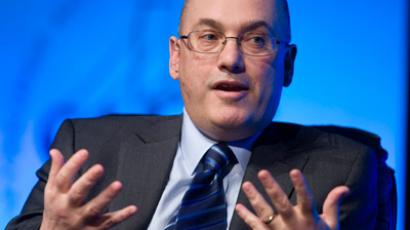‘The truth is worse than we imagine’: One-quarter of public company deals involve insider trading

An award-winning new study claims that more than a quarter of all public company deals involve transactions that could be consider examples of insider trading.
The recently published report from Menachem Brenner and Marti G. Subrahmanyam at New York University and Patrick Augustin of McGill examined years of data concerning mergers and acquisitions, or M&As, to spot unusual trends in the 30 days preceding those announcement. According to their research, around one-in-four deals contained evidence of insider trading.
“We became intrigued by reports of a number of illegal insider trading cases in options ahead of takeover announcements, in particular the leveraged buyout of Heinz by Warren Buffet and 3G Capital,” co-author Augustin said in a statement. “Hence, we set out to investigate whether instances of informed trading in options occur systematically or whether they were just random bets.”
“The statistical evidence we present is consistent with informed trading strategies, and is too strong to be dismissed as just random speculation. Our findings likely will be highly useful to regulators, firms and investors in understanding where and how informed investors trade,” Augustin added.
Journalist Andrew Ross Sorkin called the group’s study “perhaps the most detailed and exhaustive of its kind” and said its results show that “the truth is worse than we imagine” when it comes down to just how commonplace insider trading really is.
The results of their study, Sorkin wrote, “are persuasive and disturbing, suggesting that law enforcement is woefully behind — or perhaps is so overwhelmed that it simply looks for the most egregious examples of insider trading, or for prominent targets who can attract headlines.”
Indeed, the professors wrote that their research suggests that even though roughly a quarter of public deals involve insider trading, the United States Securities and Exchange Commission litigated only “about 4.7 percent of the 1,859 M&A deals included in our sample,” which was composed of hundreds of transactions made between 1996 and the end of 2012.
When the SEC does intervene, they added, it takes “on average, 756 days to publicly announce its first litigation action in a given case. Thus, assuming that the litigation releases coincide approximately with the actual initiations of investigations, it takes the SEC a bit more than two years, on average, to prosecute a rogue trade,” which on average was worth about $1.6 million apiece, according to their study.
What’s more, though, is that the authors of the report seem more than just a little certain with regards to their work. The odds of insider trading “arising out of chance” and not being explicitly planned before the public announcement of an M&A is “about three in a trillion,” they wrote.
The paper was awarded top honors at this year's prestigious Investor Responsibility Research Center Institute(IRRCi) annual investor research competition.













